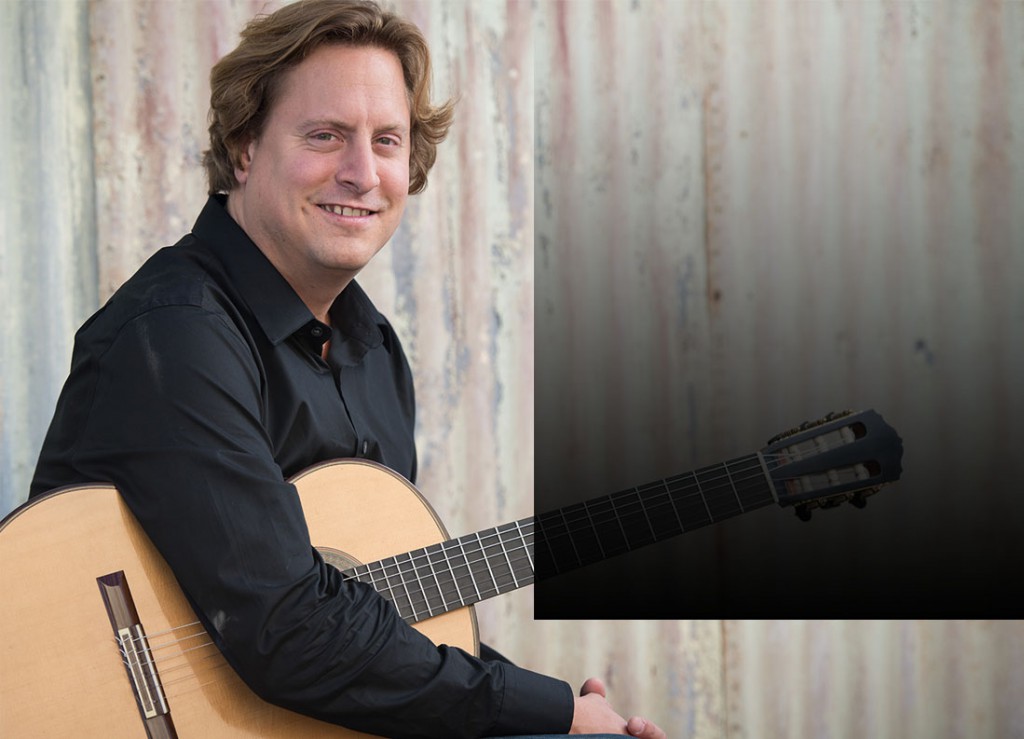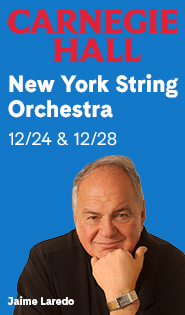Chamber Music Society closes Kaplan season with new music smorgasbord

Jason Vieaux performed music of Mario Davidovsky and Vivian Fung with the Chamber Music Society of Lincoln Center Thursday night.
Like any other classical repertoire, contemporary works are at their most persuasive when played by world-class artists who have assimilated what the composer wants to say. In the Chamber Music Society of Lincoln Center’s final “New Music in the Kaplan Penthouse” program of the season, the six musicians on stage made that truism abundantly clear.
Mario Davidovsky’s Festino (1993), a late 20th-century classic, uses the guitar as the kernel of a quartet that includes viola, cello, and double bass (Richard O’Neill, Nicholas Canellakis, and Donald Palma, respectively). The buzzing guitar role spawns similar timbres in the other instruments, mimicking the guitar’s short decay, for a few minutes of tightly-knit pleasure. (In the program notes, the composer refers to Mozart’s Divertimentos.)
Tautly played by Jason Vieaux, the guitar line fizzed with energy, occasionally evoking a mandolin, surrounded by thickets of pizzicatos from his colleagues. A more alert, precise reading can hardly be imagined. Davidovsky, looking hale at 81, was in the sold-out audience to join in the applause.
Vivian Fung was also on hand for Twist (2014), which she wrote for Vieaux and violinist Kristin Lee. The three sections have different inspirations: “Twisted Prelude” has Bach-like intertwining that gradually accelerates, and showed both Lee and Vieaux at their most virtuosic. “Twisted Pipa” is a nod to the Chinese instrument, and uses some of the micro-intervals commonly found in its traditional court music. In one striking passage, Lee inches up in quarter-tones to a showy, peacock-like climax with Vieaux, before both subside in a quiet close. The finale, “Twisted Jam,” is laced with both musicians tapping on the wood of their instruments, and Vieaux’s pristine strumming melded artfully with Lee’s intricate lines to end a thrilling piece.
Harbison’s Trio for Violin, Viola, and Cello (2013) was more reticent about revealing its secrets. at least at first hearing. In his program notes, Harbison recalls his difficulty in writing in the genre, despite extensive study of others’ efforts. He also mentioned the work’s motifs, based on the name of Barcelona’s star soccer forward, Lionel Messi—elements that at least on first hearing, remained opaque.
Nevertheless, the three performers—Lee, O’Neill, and Canellakis—could not have been more committed, in a carefully mapped-out reading, with particular attention to Harbison’s phrasing and (as throughout the evening) satisfyingly precise intonation.
Two works by absent composers made a formidable impression. Thomas Larcher’s arresting Mumien (“Mummies,” from 2001) for cello and piano requires the latter to be altered with articles placed on the strings—at one point duct tape created a seductive “ping” when pianist Gloria Chien gently struck the keys. With Canellakis making the furiously challenging cello role look easy, the end result was a prestissimo romp, though the enigmatic ending brings the two players to near stasis.
William Bolcom’s Duo Fantasy for Violin and Piano (1973) covers a huge amount of territory, from skittering spiccato lines in the violin, to gently repeated block chords in the piano. At one point a nostalgic little waltz evoking Stephen Foster appears, followed by a quick dive into ragtime—the violin morphing into a jazz fiddler—before an abrupt, quiet close. The savvy, sometimes ferocious playing from Lee and Chien was one of the night’s high points.
This concert, originally live-streamed, is available online for 24 hours after the original performance at chambermusicsociety.org/watchlisten/watchlive.

